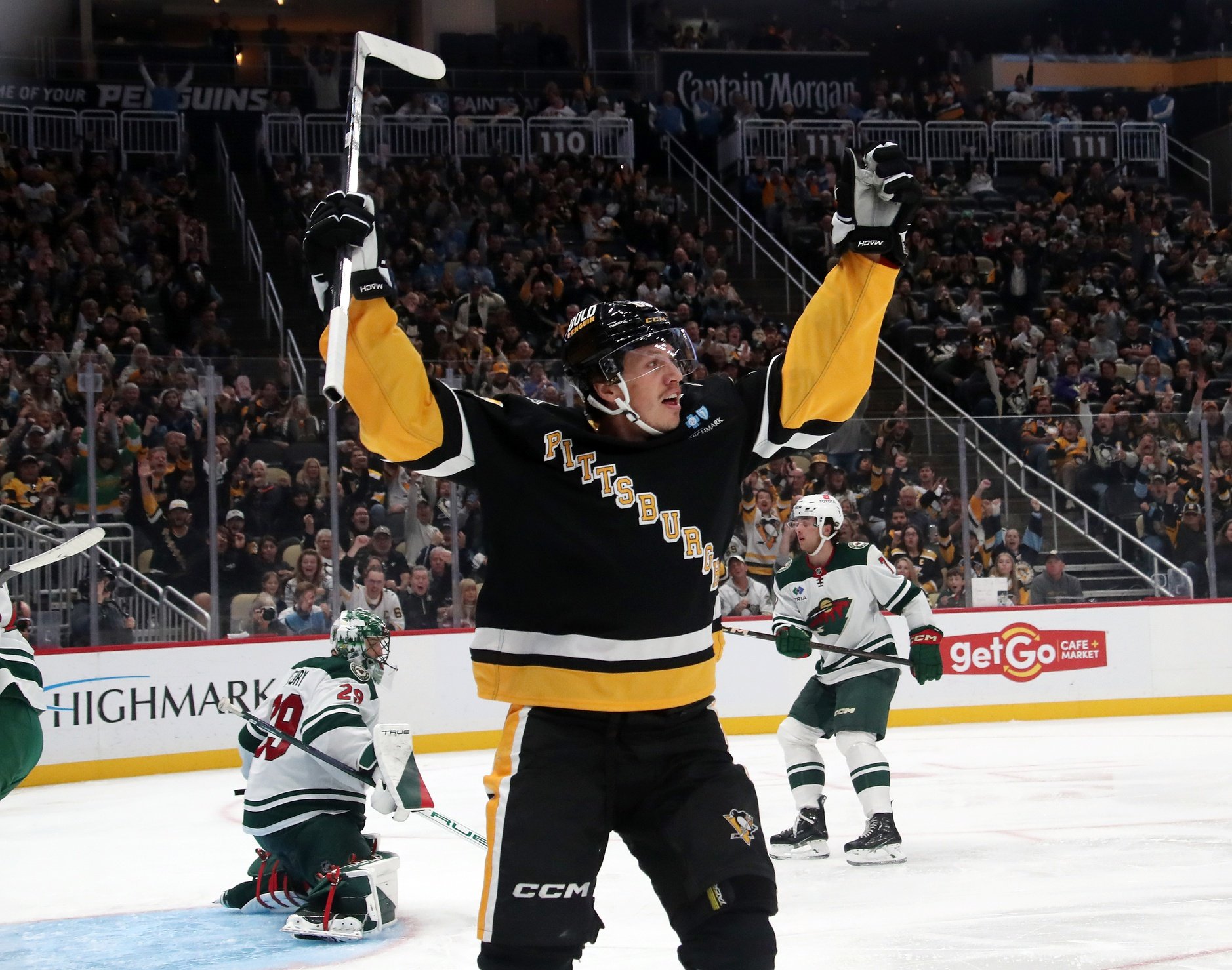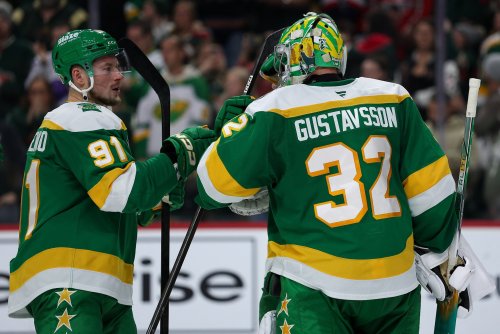
The Minnesota Wild have re-established their defensive identity this season, ranking second in the league in goals against per minute with elite underlying metrics to back up that performance.
They’ve abandoned Dean Evason’s spread-out, high-flying offense for a more structured, low-event product. Rather than trading defense for more offensive chances, they rely on their best scorers to produce in limited volume. It’s been a successful return to the franchise’s defensive roots.
So, why can’t this team kill a penalty?
There’s an obvious answer: five-on-five defense is not the same as shorthanded defense. While correct, it’s not a particularly interesting answer.
Furthermore, it does nothing for the fans begging and pleading into their TV for this team to Please, for the love of God, just kill this one. Just one time.
In that interest, let’s dive deep and figure out what’s wrong with this penalty kill.
The story of this season’s penalty kill unit begins in September when John Hynes ran his training camp in Minnesota. Camp was an opportunity for him to run his systems during on-ice practice, which was impossible last year when he took over mid-season and held mostly video meetings.
Hynes and assistant coach Jack Capuano offered insight into their penalty kill philosophies in an article by Michael Russo for the Athletic. Ultimately, they seem far more concerned with preventing zone entries in the first place rather than defending opponents after they enter the zone.
“We don’t want to let them in, because once you let them in, then you have all these scenarios we’ve got to deal with,” said Capuano. “So that’s why we spent a lot of time on our penalty-kill forecheck, line-rush defense on the penalty kill, and then what happens when it gets in.”
Call it the Capuano Gambit. If you can stop their power play at your blue line, you don’t have to defend all those nasty set plays in the zone.
To achieve this, the PK has prioritized forwards with a long reach who can break up entry passes. Coming off the ice are the quicker forwards who could defend more space in the defensive zone.
That makes intuitive sense, given that NHL power plays are becoming more skilled every year. It’s a lot easier to kill time watching the opponent regroup and making a stand at the defensive blue line in hopes of creating a turnover before generating a scoring chance.
It’s especially shrewd for the Wild to attack entries rather than defend in-zone because their in-zone PK defense has been totally ineffective. At the time of this writing, Minnesota ranks 31st in PK success rate. That’s likely to get better, but not much -- they rank dead-last in the NHL in four-on-five expected goals against (xGA) per minute per MoneyPuck.com. They may positively regress and still end up with the worst penalty kill in the league.
Not all of this falls on the skaters. Marc-Andre Fleury and Filip Gustavsson have been slightly below-average in net. Gustavsson’s four-on-five save percentage is minus-.005 above expected, meaning an average goalie would have saved .915, and he’s only saved .910. Fleury’s is minus-.112 above expected.
That adds up to 1.4 goals above expected. If you take those 1.4 goals away, Minnesota’s PK% would only improve to 68.3%, ranking third-worst in the league. Average goaltending would not solve this problem.
It’s surprising to see a Wild penalty kill unit that’s so inept. Top-15 and even top-10 PK units were the norm in Minnesota throughout the 2010’s. However, since Kirill Kaprizov arrived in 2020, the team’s identity has shifted towards one that maximizes its star players.
That shift is apparent upon reviewing the goals that Minnesota’s penalty kill has allowed, particularly the forwards.
First, let’s review what a defensive-zone coverage rep looks like on Minnesota’s kill.
Minnesota’s penalty kill structure is demanding of the strong-side defenseman. They often task them with two jobs: pressuring the puck carrier and cutting off a passing lane.
Watch Jake Middleton on the right side of the screen. Middleton steps into the shooting lane to take away Valtteri Puustinen’s time and space while placing his stick in the passing lane to cover the net-front player. Back pressure forces Puustinen to shoot from distance or walk into Middleton and commit a turnover.
Ultimately, it’s not a particularly dangerous chance. It’s a decent coverage rep in that sense. The goal is mostly a result of the traffic in front, which causes Fleury to see the shot late.
Now, let’s review a bad coverage rep.
At first glance, this seems like a shot Gustavsson should be able to stop. However, the puck movement is too good to expect that -- Moneypuck estimates that this shot had a 56% expected goal value. Most NHL teams generate about 23% xG in a typical two-minute power play, meaning that this shot is about as dangerous as two power plays.
The core issue is that Yakov Trenin is too slow to pressure Zach Werenski. It’s impossible to ask Trenin and Khusnutdinov to cover all three Columbus Blue Jackets players at the point. If Trenin were a step or two faster, though, it would force Werenski’s one-timer further to the perimeter. Pushing Werenski wider than the faceoff dot or above the top of the faceoff circle would have given Gustavsson more time to push across the crease.
So why is Trenin on the PK if he can’t execute the structure? Note this quote from Hynes after an unrelated power play goal scored by the LA Kings:
“If you’re good on your stand [at the blue line] and you’re good on your shares [in the defensive zone] and you have opportunities to get the puck out of the zone, that’s when it has to get out of the zone.”
The goal in question was undoubtedly the result of Matt Boldy’s poor defensive zone coverage, but Hynes doesn’t seem to care about that. He understands that no four men can cover five opponents perfectly. As his assistant Capuano put it, you’re playing against “45 million on the ice.”
The other team will generate dangerous chances. It’s wiser to try to prevent the zone entries rather than prevent those chances because at least a zone entry challenges the power play to stay onside.
Trenin is not here to kill penalties in his own zone: He’s here because he’s tall, has a long reach, and can break up entries.
That’s probably why the in-zone structure is so demanding of Minnesota’s defensemen. The defense corps is instinctive, and they all have a long reach. Faber, Middleton, Bogosian, and Brodin are 6-foot-1 or taller, and Jared Spurgeon uses a stick longer than the Mississippi. They have the instinct to cover two players when space is compressed, space is compressed on zone entries, and the puck is on the strong side of a power play.
Hynes’s vision for the penalty kill forces the opponent to make challenging plays and capitalize when their opponent fails. That’s why he didn’t mind Boldy’s mental lapse and instead mentioned that they should have cleared the puck earlier in the play. It’s also possible that Brodin’s failed clear from four nights earlier was stuck in his mind:
While talented, the defense corps is fallible. Take the Toronto Maple Leafs’s goal as an example. Brodin covers the “bumper” player in the middle and puts his skate in the passing lane to the net front. Instead of covering these two players, he should cover one of them and pressure the puck carrier.
Foligno’s role is to cover the bumper and challenge the seam pass. He doesn’t need to cover both perfectly; he just needs to cover until Brodin reaches the puck carrier. However, with no pressure from Brodin, Nylander has time to work into shooting space while Matthews creates a passing lane.
Undeniably, this coverage structure is not working well. Per MoneyPuck.com, the Wild have allowed 10 high-danger chances in 33 four-on-five minutes -- that’s twice as fast as the 2023-24 NHL average. If the team successfully stopped their opponents at the line, it should reduce high-danger chances per minute. However, they’ve been unable to kill shorthanded time by keeping the puck in the neutral zone.
Not all of this is Hynes’s fault. The team planned to utilize 6-foot-2 Matt Boldy and his long reach on the penalty kill this year, but he missed much of training camp with an injury. Yakov Trenin was signed to improve the penalty kill as a “physical, strong-skating forward.” He may be dealing with an injury, given that he’s also been an unpleasant surprise at even strength.
If this is Trenin’s best, it would be a glaring indictment of his contract, which lasts into his age-31 season.
That’s a lot of doom and gloom for a team that's second in its division with a +12 goal differential. If the penalty kill is this bad, how have they won so much? Will the PK be the Achilles heel that makes all this winning unsustainable?
The answer to that lies not in how well the team kills penalties going forward but in how many penalties they need to kill. Teams with a bad penalty kill usually give up a lot of power-play goals unless they don’t have to kill penalties.
While the Wild surely won’t go the rest of the season without taking another penalty, they’ve been elite at avoiding penalties. In 2023-24, they rank 2nd-best in penalties per game, only facing 2.0 penalties per game. Last year, they ranked 7th-worst with 3.2 penalties per game.
That’s likely unsustainable over an entire season, but their penalty-kill rate is also due to regress. So, what if Minnesota finishes with a more realistic rate of penalties per game and a more realistic PK%? For example, what if they were top-five in avoiding penalties but bottom-five at successfully killing them? That works out to about 2.75 penalties per game and a PK% of about 75.5% -- that’s .67 PP goals against every game, or 55 PPGA throughout the season.
Right now, Minnesota is on pace for 61. That means they can survive their horrendous PK -- if they can continue to avoid penalties at an elite rate.
The rest of the season will test how bad a team can be shorthanded if everything else goes right. It doesn’t make much sense that the Wild could be so bad at killing penalties but so good at five-on-five defense, but sometimes it happens.
If the Wild can stay off the PK and continue dominating possession, it’s enough to keep games close. In those close games, it will be up to the team’s stars to break ties in limited five-on-five scoring chances and on the power play.
Think you could write a story like this? Hockey Wilderness wants you to develop your voice, find an audience, and we'll pay you to do it. Just fill out this form.







Recommended Comments
Join the conversation
You can post now and register later. If you have an account, sign in now to post with your account.
Note: Your post will require moderator approval before it will be visible.